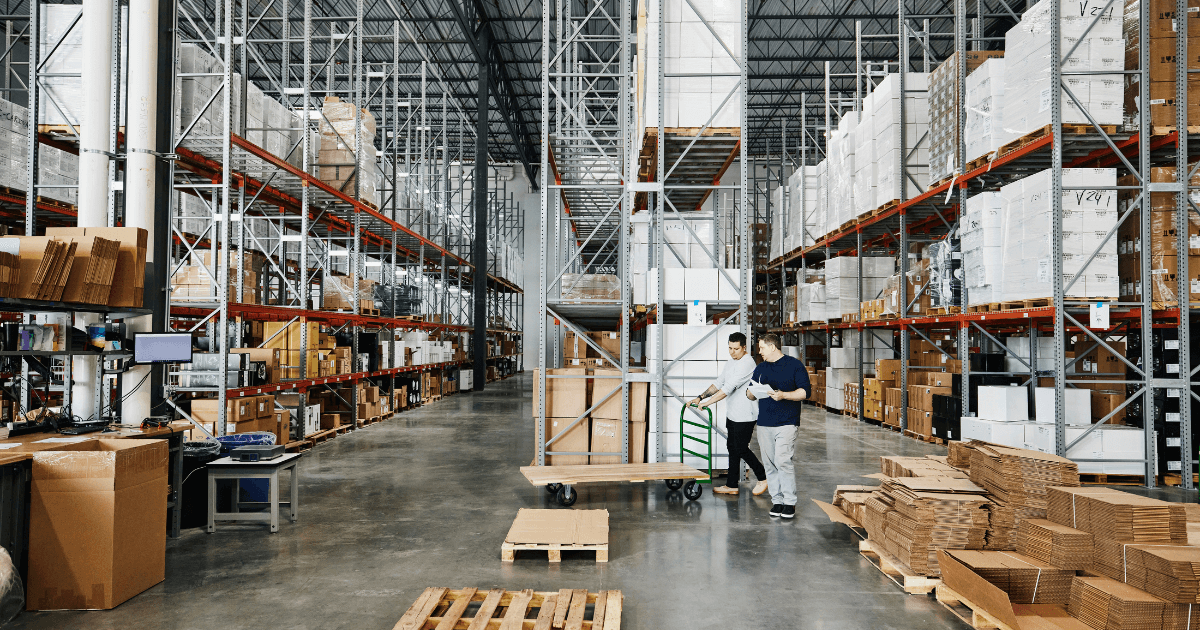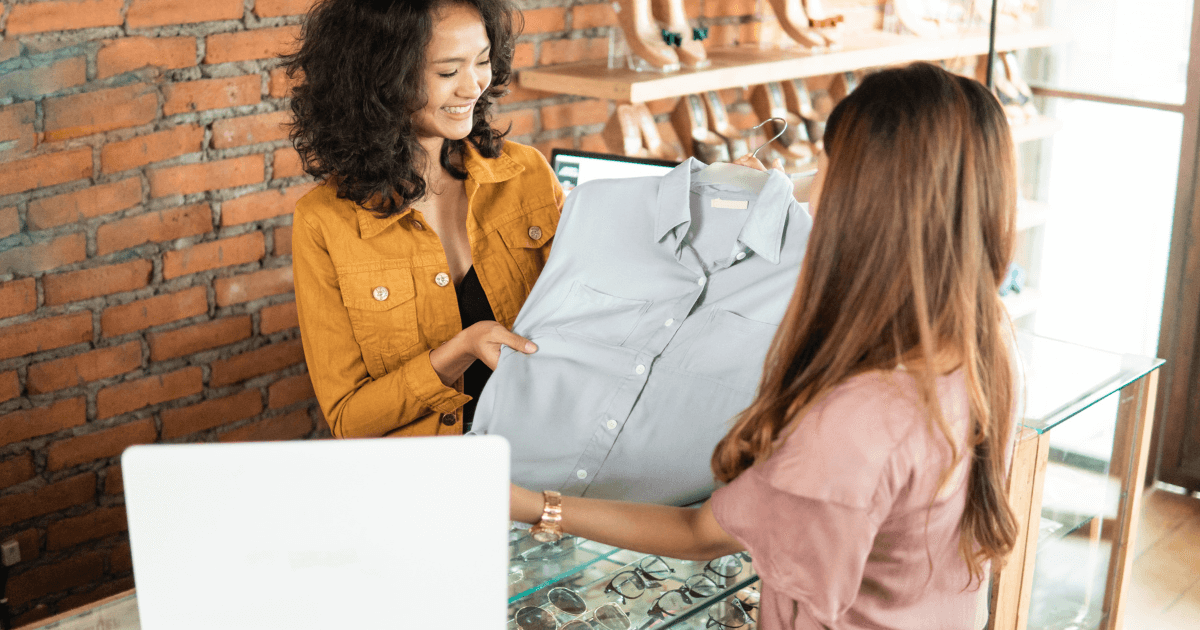2023's Top Retail Trends: Adapting For Success
Deloitte has released its 2023 Industry Outlook which contains some top retail trends that bricks and mortar retailers need to adapt into their store.
For smaller retailers, this awareness can be a game-changer, yet there's often a prevailing misconception that these trends are reserved for the retail giants, and they don't hold much relevance for local brick-and-mortar retailers.
Deloitte has conducted extensive research, providing insights that are worth their weight in gold. The truth is, these trends can be leveraged to the advantage of smaller retailers in more ways than they might imagine.
Deloitte has meticulously done the legwork, leaving us with the roadmap that we can incorporate into our retail business plan.
As a seasoned retail business coach, I've seen firsthand how retailers can fall into the trap of thinking these trends are inaccessible.
The key to success lies in adaptation and implementation. Smaller retailers have the flexibility and agility to embrace these trends in ways that can uniquely increase sales, generate cash, and create more time freedom for YOU - The business owner!
Now, you might be wondering about the feasibility of automated micro-fulfilment centres (MFCs) for small retailers. While these advanced systems are indeed transformative, they may not always be a practical fit for smaller businesses with limited resources.
So, what can smaller retailers do to enhance their last-mile capabilities without major investments and capitalize on this top retail trend? Let's explore some alternatives:
1. Local Partnerships
Consider forming partnerships with nearby stores or businesses. By pooling resources, you can collectively offer efficient last-mile solutions, such as shared delivery services or pickup points.
These collaborations not only reduce costs but also expand your reach within the local community.
2. Optimize Delivery Routes
Focus on optimizing your existing delivery routes. Plan efficient routes to minimize travel time and fuel costs. Utilize route planning software or apps to streamline the process, ensuring timely deliveries to your customers.
3. Click and Collect
Implement a click-and-collect system, allowing customers to order online and pick up their purchases in-store. This option not only saves on delivery costs but also encourages in-store visits, and is a great marketing strategy showcasing how to improve sales in retail stores.
4. Local Couriers
Explore partnerships with local courier services or gig economy platforms. These options often offer cost-effective and flexible delivery solutions tailored to your specific needs.
By adopting these practical strategies, smaller retailers can still tap into the essence of last-mile capabilities. It's not about matching the capabilities of retail giants; it's about enhancing your local presence and providing convenience to your valued customers.
The thought of customer returns is a bane to many retail business owners…
However, another crucial aspect of the retail journey is often overlooked - getting products back.
This is where the concept of reverse logistics comes into play, and it's just as vital for smaller retailers.
Understanding Reverse Logistics
Reverse logistics, in essence, is the process of managing returned or unwanted products. It encompasses everything from returns due to defects or customer dissatisfaction to recycling and repurposing.
While it might not be the most glamorous part of retail, it's an essential one, especially in today's customer-centric landscape.
The Power of In-Store Reverse Logistics
For smaller retailers, embracing reverse logistics can be a game-changer. It's not just about processing returns; it's about turning each return into an opportunity.
Here's how:
1. Immediate Customer Satisfaction
One of the significant advantages of in-store reverse logistics is the ability to provide immediate credit or exchanges to customers. This aligns with their desire for instant resolutions and helps maintain positive customer relationships.
2. Cost Savings
Handling returns in-store can significantly reduce expenses related to return delivery. Instead of shouldering the costs of mailing return items, you can manage the process efficiently within your store.
3. Boosting Foot Traffic:
Consider the rising popularity of return bars - stores that pack and ship returns for partnering retailers. By participating in such programs, you not only save on processing costs but is a great strategy on how to increase footfall in retail.
In challenging economic times, this is a win-win scenario.
Recent data indicates that retailers engaging in return bars enjoy over 20% savings in processing costs. It's a remarkable figure that highlights the potential of embracing reverse logistics.
Using Reverse Logistics to Your Advantage
Now, you might be wondering how to incorporate reverse logistics into your smaller retail store:
1. In-Store Returns Desk
Dedicate a section of your store to returns and exchanges. Train your staff to handle returns efficiently, providing instant solutions to customers.
2. Partner with Return Bars:
Explore partnerships with nearby return bars or stores offering similar services. These partnerships can streamline the return process and broaden your customer base.
3. Recycling Initiatives
Consider recycling and repurposing returned items whenever possible. This showcases your commitment to sustainability, which can resonate with environmentally-conscious consumers.
By embracing reverse logistics, smaller retailers can transform returns from mere transactions into opportunities to enhance customer satisfaction, save costs, and attract more foot traffic.
It's an aspect of retail that, when harnessed correctly, can set you apart in the competitive landscape.
Let's face it; acquiring new customers can be a costly endeavour. You should always be looking to come up with ideas to bring customers into your store. Studies indicate that it can be up to six to seven times more expensive than retaining existing customers. This is where social commerce shines, as it offers a powerful tool for reinforcing customer loyalty.
For smaller retailers, the focus should be on creating a seamless purchasing experience within social channels. This involves utilizing various technologies and strategies that encourage users to make purchases and, ultimately, foster loyalty.
1. Shoppable Tags with Product Information
These tags allow you to provide detailed product information, pricing, and availability within your social media posts. Customers can click on these tags to access essential details, reducing the friction between product discovery and purchase.
2. Embedded Brand Website Integration
Integrating your brand's website into social media apps is another smart move. It allows customers to seamlessly transition from browsing your social content to making purchases on your website without navigating through multiple pages.
3. In-App Transactions
Simplify the shopping journey by enabling in-app transactions. Customers can complete their purchases within the social media app itself, eliminating the need to switch between apps or websites.
Now, let's discuss how smaller retailers can effectively incorporate social commerce into their strategy:
1. Engage with Shoppable Content
Create engaging, visually appealing content that includes shoppable tags. Highlight your products, share user-generated content, and encourage interaction.
2. Seamless Checkout
Ensure that your checkout process, whether on your website or within a social app, is smooth and user-friendly. Any hiccups during this critical stage can lead to cart abandonment.
3. Leverage User-Generated Content
Encourage your customers to share their experiences with your products on social media. User-generated content can build trust and drive sales.
By adopting these strategies and technologies, smaller retailers can reduce friction in the shopping journey and keep their customers engaged within social channels. Remember, social commerce is not just for the big players; it's a tool that can help you strengthen customer relationships and thrive in the competitive retail landscape.
In this exploration of the top retail trends, we've uncovered invaluable insights that can significantly impact the success of smaller retail businesses. It's crucial to recognize that these trends aren't just for the retail giants; they hold immense potential for smaller retailers as well.
It's the key to unlocking new opportunities, enhancing operations, and ensuring that your business remains competitive.
To implement these trends effectively, remember that you don't have to navigate this journey alone. Seeking expert guidance and support can make a world of difference. As a retail business coach, I've witnessed first-hand the transformational impact that embracing these trends can have on smaller retailers. It's not just about surviving; it's about thriving in a retail world filled with opportunities.
If you need help implementing these trends in your store, then we should chat.
Whether you're a seasoned retailer or just starting, consulting with a retail business coach can provide you with a roadmap tailored to your unique needs.
The future of retail is exciting, even though some might claim that retail is dying. By incorporating these top retail trends, you're not just adapting; you're setting your smaller retail business on a path to excellence.




